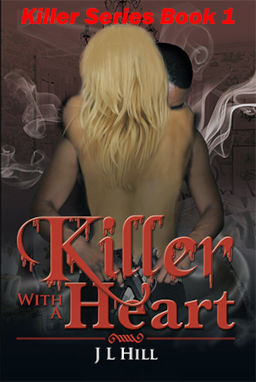Are you slogging through the middle of your novel? Here’s the solution
 It’s easy to lose steam while writing the middle of your story. Here are some tips to keep readers (and yourself!) engaged all the way to the end.
It’s easy to lose steam while writing the middle of your story. Here are some tips to keep readers (and yourself!) engaged all the way to the end.
by James L Hill
Writers are taught the basic rules: beginning, middle, and end. Does not matter what you are writing, what genre, what style. All have the same common structure. But a lot of writers find the middle the most difficult to get through.
 That is why so many writers never complete their novels. It is why they complain about writer’s block. They start off great. Their ideas are on fire. Some even have a fantastic ending in mind. But they just can’t get there. They get lost in the middle.
That is why so many writers never complete their novels. It is why they complain about writer’s block. They start off great. Their ideas are on fire. Some even have a fantastic ending in mind. But they just can’t get there. They get lost in the middle.
Series writers are especially afflicted with middle passage syndrome. The first book is great. It flies from the imagination like an eagle. The story practically writes itself. Then the next book takes years to complete.
Books & Buzz Magazine is where writing pros spill their secrets! Subscribe now for free
After much self-inspection, I have come to the realization that the middle stories—the middle of any writing—lacks something new to say. But that is where the action is. The beginning is exciting. You know nothing about the characters or their situation. It doesn’t matter if it is fiction or non-fiction. You are introducing possibilities that are wide open to the imagination. There is so much to be told.
When you reach the middle, the characters are known and the main conflict has been revealed. So now what?
(By the way, we are in the middle of this article, so where do we go from here? This is where I give you advice from years of experience.)
There are a couple of ways to keep the story moving. Number one is to bring in new characters. These are your supporting roles, the B players. They must be important enough to make a difference in the story, yet not surpass the main characters. They are the best friends, the henchman, the hard-nosed boss who is obstructing the hero’s path to success.
When you reach the middle of the story, the characters are known and the main conflict has been revealed. So now what?
For example, the best friend may have the correct solution but a poor or even dangerous plan to execute it. The henchman may expose the villain before he is ready to spring his trap. The bad boss does not see the full picture and is trying to send the hero down the wrong path.
These characters will keep the story flowing. If you are writing a series, new characters are a must. It is very hard to tell another story about the same people from the first book. Those people need to be in the second book, but you need a whole set of secondary people to build the story around. It is their interaction with the main characters that drives the next story. They bring out new characteristics that would otherwise be hard to work into the story.
Another way to work through the middle is with subplots and plot twists. In fact, the middle is the place for them. The reader is engrossed in the story. They are already forming ideas as to what you are doing, and bam! Things take a turn for the worst. Or here comes some history that changes the way the reader views your people. The hero has a troubled past that now presents itself. You see why the villain is a bad guy and you feel sorry for him. These situational changes drive a major portion of the story.
The subplot is effective in the middle books of a series because the main storyline needs to be different from the original book. The subplot becomes the bridge between the two books. When the only tie between the books is the main character, the stories fall flat. The series becomes a set of standalones which tend to become stale and uninteresting. Even the best character-driven series can suffer if there is nothing holding the tales together.
Take James Bond: If he hadn’t worked for the British Secret Service and fought SPECTRE, either secretly or outwardly, he wouldn’t have been as interesting. The overarching storyline of the British government discovering a plot that James Bond must stop kept the stories moving along. Usually, the plots weren’t against the United Kingdom, but they were the first to find out something wasn’t right, so they sent James Bond to figure it out and kill those responsible.
We have reached the end. For some writers, this is what they have been working for the entire time. Other writers, like me, come up with the ending first, then we go on the long trek to get there. For others, the ending is the summation of what you have already been told. And still for other writers, the ending is a complete surprise.
As a plotter, a person who outlines and writes plot points, I enjoy the freeform writing of the middle. Yes, I have storylines to fill and characters to birth, but how it happens is open to imagination. And some things show up completely unplanned. People come in from left field and situations occur without warning. People die, a love is found, life happens.
The Killer Series was planned for about two decades before I wrote the first book, Killer With A Heart. Even though all four books were fully formed in my head, people like Nathan/Nancy, Lana, and the Russian Dolls became major characters in the middle books, Killer With Three Heads and Killer With Black Blood. Without them, those stories would have failed. Sure, MoJo and Nicky Nails’s story was strong, but their involvement with the other people in their world makes them stand out. And you probably would not have gotten to Killer With Ice Eyes, the end of the series, without minor characters taking on major roles later in the stories.
If you want to write a great series, or a great story, master the middle passage. It is not the place to rack up word count, it is the place where the words count the most.
 James L Hill, a.k.a. J L Hill, is a native New Yorker from the South Bronx, Fort Apache, of the turbulent sixties. James earned a degree in computer programming, his other love. A multi-genre author, his experiences seasoned his novels and the worlds he imagined. He started RockHill Publishing LLC to publish his own work and give others access to the literary world. Visit James at his website.
James L Hill, a.k.a. J L Hill, is a native New Yorker from the South Bronx, Fort Apache, of the turbulent sixties. James earned a degree in computer programming, his other love. A multi-genre author, his experiences seasoned his novels and the worlds he imagined. He started RockHill Publishing LLC to publish his own work and give others access to the literary world. Visit James at his website.